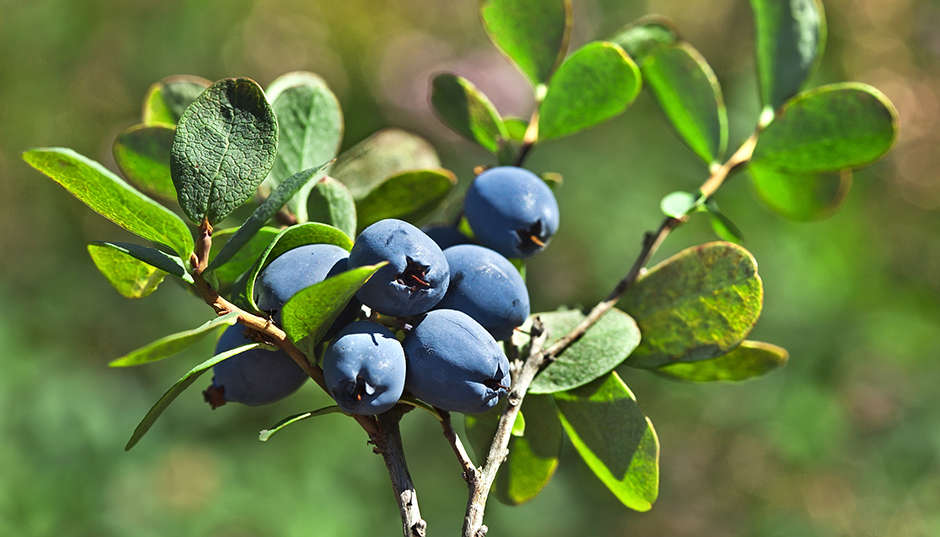A relative of the Cranberry, Huckleberry, and American Blueberry, the Bilberry grows in temperate and sub-arctic heath and woodlands to a height of about 40 centimetres. It is a shrubby perennial plant with bell-shaped flowers which produce small, single dark berries in summer. Its name is derived from the Danish word, bollebar, meaning “dark berry,” and its botanical genus,vaccinium, is derived from an ancient Greek word that references berry-producing shrubs.
Common Name: Bilberry
Botanical Name: Vaccinium myrtillus
Other Names: Airelle, Dyeberry, Whortleberry
Growing Area: Northern Europe, Western Asia, North America
Nutrients & Applications:
The deep purple almost crimson colour of the Bilberry’s flesh is due to the presence of anthocyanosides. These compounds help build strong blood vessels and improve circulation to all areas of the body. They also prevent blood platelets from clumping together (helping to reduce the risk of blood clots) as well as having potent antioxidant properties.
Anthocyanidins boost the production of rhodopsin, a pigment that improves night vision and helps the eye adapt to light changes. During World War 2 British pilots noted that eating Bilberry jam before a flight dramatically improved their night vision. Bilberry leaves are also rich in tannins, substances that act as an astringent. The tannins also have anti-inflammatory and anti-microbial properties.
An ancient medicinal plant of Europe, Bilberry leaves were used by the earliest Greek and Roman physicians. Dioscorides in the 1st century A.D. recommended Bilberry leaf as a means of tightening the skin due to the high astringency of the leaves. In the middle ages, physicians recommended the use of Bilberry leaf for treating a wide range of diseases including kidney stones, typhoid fever, scurvy, bladder infections, nausea and indigestion and to control diahorrea.
Today, research has shown Bilberries can support eye health, helping to protect against glaucoma,prevent cataracts and damage to the small blood vessels in the eye due to diabetes. Bilberries also help to maintain good cardiovascular health,healthy cholesterol levels and a strong immune system.
Decoctions of Bilberry leaf have a long history of folk use as an agent that helps support healthy blood sugar levels and are also known to be helpful for maintaining joint health and easing menstrual cramps.Bilberries can beeaten fresh, enjoyed as a juice or cordial, or made into a jam, tart or pie.
